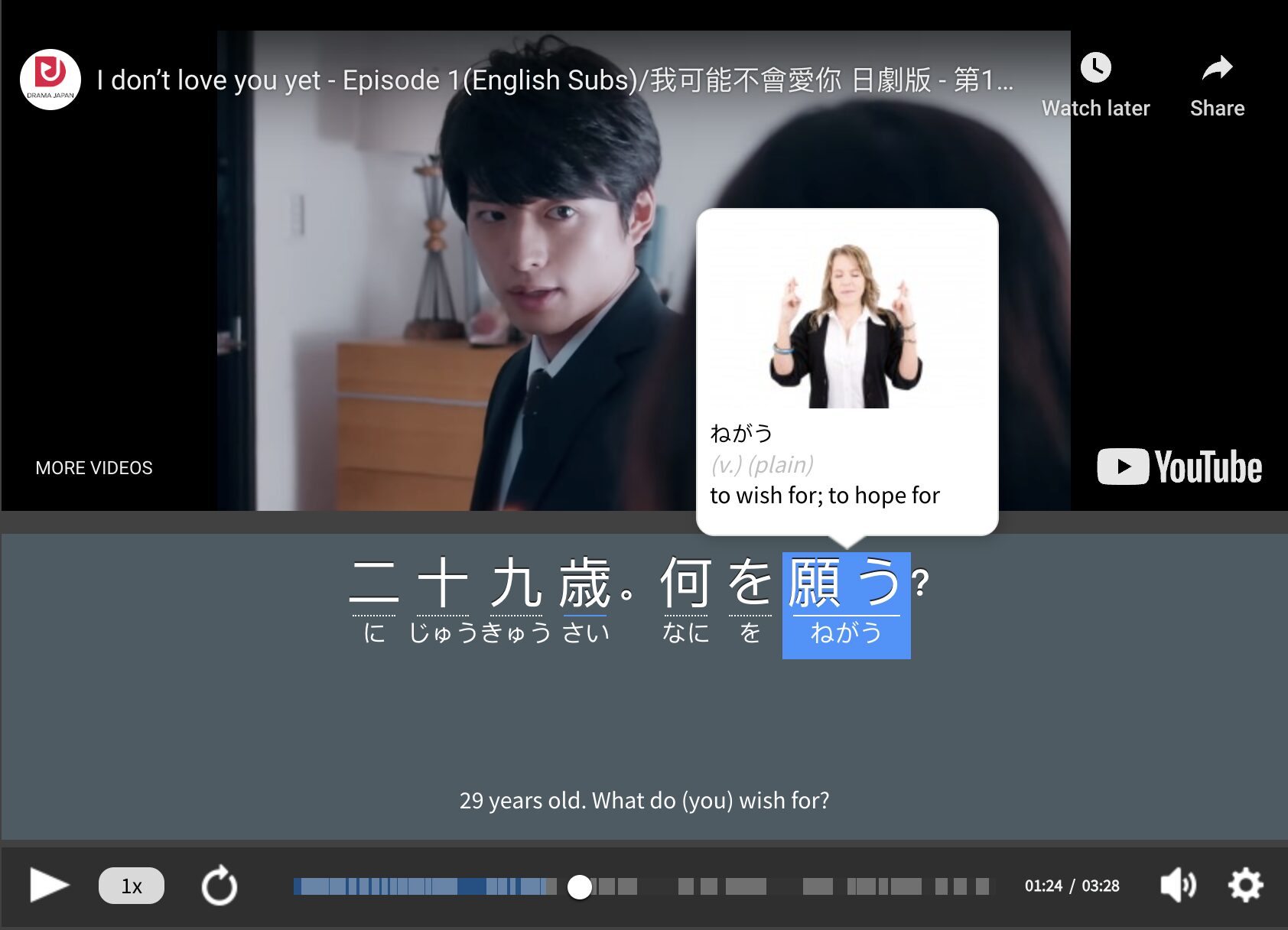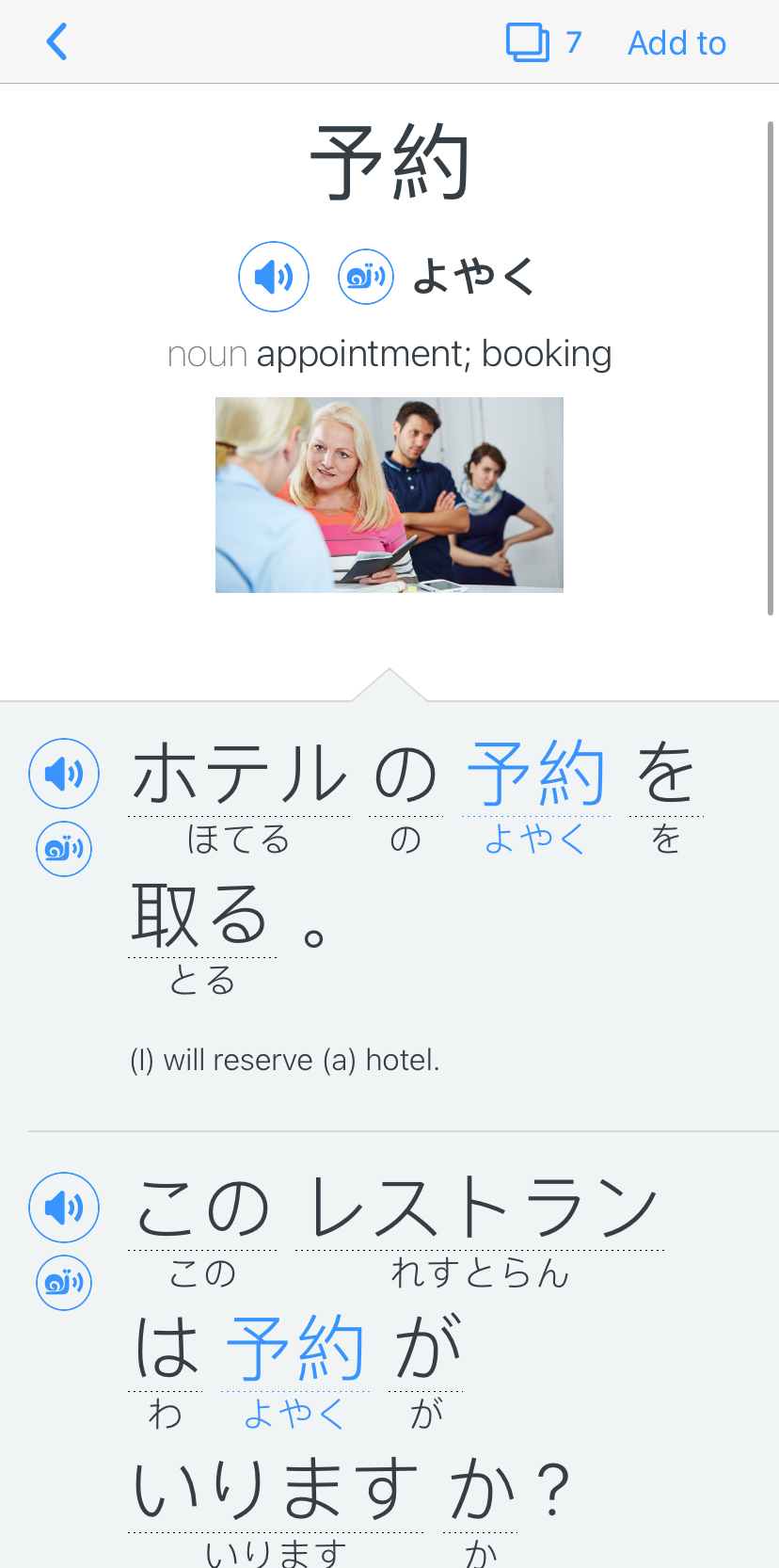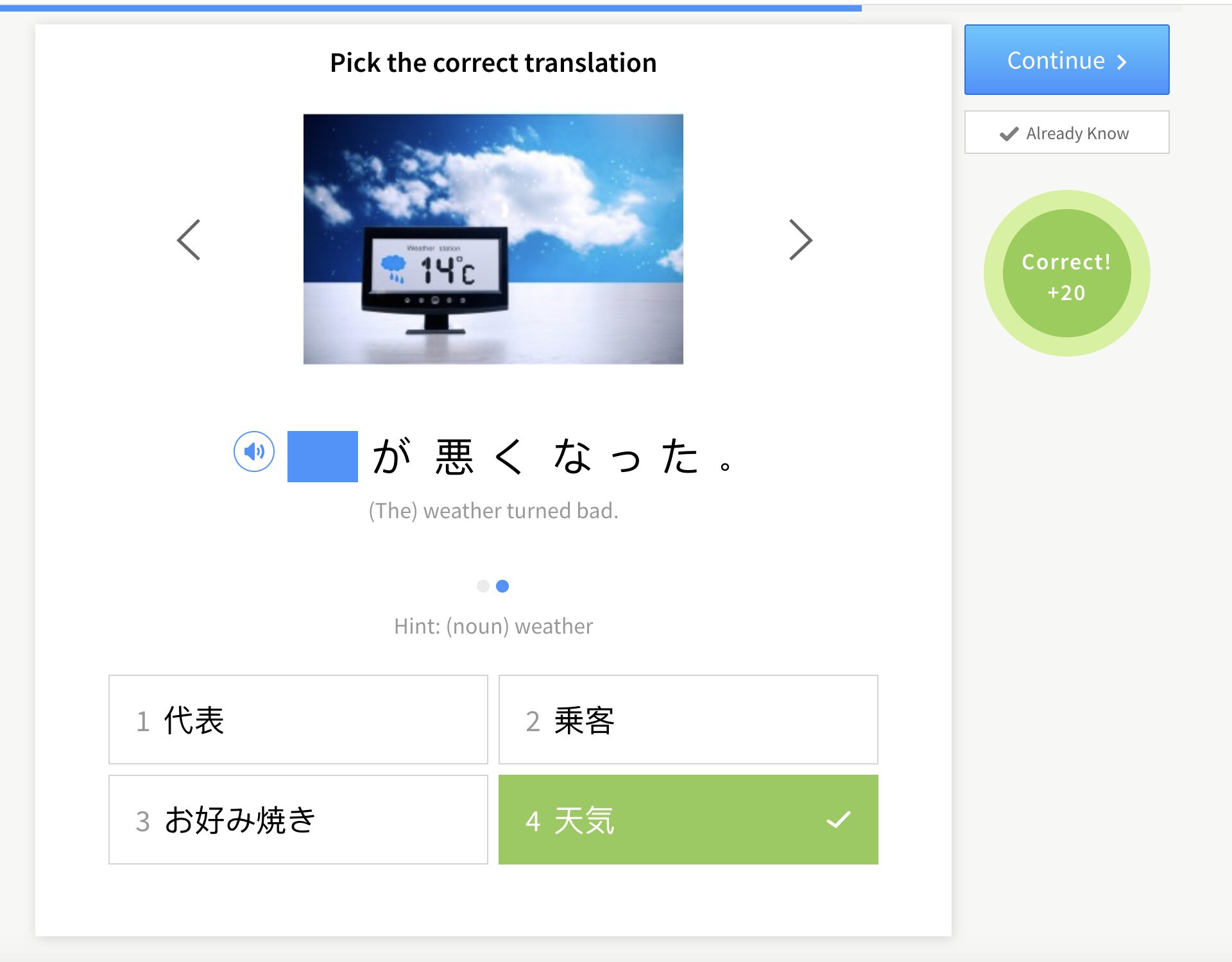How to Learn Hiragana and Katakana

Japanese uses three main scripts: hiragana, katakana and kanji.
Kanji (漢字) is not an alphabet—it’s a system of logographic characters.
They’re actually adopted Chinese characters used in modern Japanese writing. Most Japanese words (nouns, adjectives and verbs) are written in kanji. There are about 50,000 kanji in Japanese.
How to Learn Kanji: 18 Tips from a Guy Who Did It and Survived | FluentU Japanese Blog
“How to learn kanji without getting a headache” is a thought you probably have on a regular basis. Luckily, you can read this list of different approaches to learning…
But in this post, we’ll be focusing on hiragana and katakana.
For very good reason.
Hiragana and katakana are both alphabets—something we’re more familiar with as English speakers.
They consist of less than 50 characters each. Not too hard to manage compared to those 50,000 kanji, I’d say. And if you really think about it, between capital and lowercase letters, cursive and print, English has 104 different letter appearances in its alphabet. This should be doable for us.
Hiragana and katakana characters make phonetic sounds. Just like the English alphabet. This means that こ makes the “ko” sound, ん makes the “n” sound, に makes the “ni” sound, ち is “chi”, and は in this situation is pronounced as “wa.” Together, こんにちは reads as “konnichiwa.” Easy, right? And the best part is that hiragana and katakana use the same sounds (so, it’s just two ways of writing the same thing.)
Download: This blog post is available as a convenient and portable PDF that you can take anywhere. Click here to get a copy. (Download)
What Is Hiragana?
Hiragana (ひらがな) is used mainly for grammatical purposes.
Participles, expressions, and words with extremely difficult or rare kanji are mostly written in hiragana. Hiragana characters are easy to identify because they’re usually a bit curvy and look simpler than kanji characters.
私の名前は優也です。
寿司を食べます。
英語は難しい…
There are some cases where Japanese words use hiragana more often than kanji such as かわいい (kawaii) or さようなら (sayonara).
And when you first start learning Japanese, you’ll find that a lot of early learning materials are written out for you in hiragana. So it’s a natural first Japanese lesson!
Start practicing now, and you can have this alphabet under your belt in a few days.
https://www.fluentu.com/blog/japanese/japanese-hiragana-practice/
Hiragana Chart
| a | i | u | e | o | |
|---|---|---|---|---|---|
| あ | い | う | え | お | |
| k | か | き | く | け | こ |
| s | さ | し | す | せ | そ |
| t | た | ち | つ | て | と |
| n | な | に | ぬ | ね | の |
| h | は | ひ | ふ | へ | ほ |
| m | ま | み | む | め | も |
| y | や | ゆ | よ | ||
| r | ら | り | る | れ | ろ |
| w | わ | を | |||
| n | ん |
What Is Katakana?
While katakana (カタカナ) represents the same sounds as hiragana, it’s mainly used to represent foreign words. Foreign names are represented in katakana, as are many foreign foods. Japan’s fun and quirky onomatopoeia appears in both katakana and hiragana. Katakana characters take a boxier form than hiragana characters do, and appear simpler than kanji. Every katakana character has a hiragana counterpart that makes the same sound.
レディー・ガガ (Lady Gaga)
ボン・ジョヴィ (Bon Jovi)
ジョン・スミス (John Smith)
The small circle in between the previous names separates a first name from a last name (or separates two names) so Japanese readers can tell where a foreign name begins and ends.
ビールを飲んでみましょう!(Let’s drink beer!)
私はアメリカンフットボールが好きです!(I like American football*.)
マクドナルドで食べる。(Eat at McDonald’s.)
*American football can also be called アメフト.
Because these words aren’t native to Japan, they’re written in katakana. Many sound words (like sound effects in manga or animal noises) are also written in katakana.
Katakana Chart
| a | i | u | e | o | |
|---|---|---|---|---|---|
| ア | イ | ウ | エ | オ | |
| k | カ | キ | ク | ケ | コ |
| s | サ | シ | ス | セ | ソ |
| t | タ | チ | ツ | テ | ト |
| n | ナ | ニ | ヌ | ネ | ノ |
| h | ハ | ヒ | フ | ヘ | ホ |
| m | マ | ミ | ム | メ | モ |
| y | ヤ | ユ | ヨ | ||
| r | ラ | リ | ル | レ | ロ |
| w | ワ | ヲ | |||
| n | ン |
How to Learn Hiragana and Katakana
Fellow moderns, let’s admit that we’re all terminally online.
It’s important to practice writing things out by hand, sure.
But as a first step, I’d make sure that I can read and write in Japanese on my computer and on the phone which is glued to my hand:
How to Type in Japanese: Keyboards and Practice Ideas | FluentU Japanese
If you’re learning Japanese, you need to learn Japanese typing. Click here to learn how to master typing in Japanese. Learn how to install a Japanese keyboard on devices…
Typing in Japanese
One way that I learned hiragana and katakana was by writing things out in Japanese whenever I had the opportunity.
Whether I was jotting down my grocery list, writing to a pen pal or having another pointless Twitter feud about the latest political fiasco, I’d type it in Japanese.
To type in Japanese, select Japanese input on your computer. Type as you usually would on your normal (English) keyboard. So if you write “a” on your keyboard the character あ (which makes the same phonetic sound) will appear. If you type “ko” the character こ will be created.
If you’re satisfied with what you’ve written, hit “enter” on your keyboard. If you’d like to change the text from hiragana to katakana, press the “space key” on your keyboard. A drop-down menu should appear with a list of possible katakana to choose from.
This will have you recognizing characters with hardly any effort. For more detailed instructions on how to type in Japanese, you can check out CosCom’s Japanese typing tutorial or Redcocoon’s Japanese typing tutorial.
Writing by hand in Japanese
After frequently typing in Japanese, I was able to recognize more and more characters, but actually writing in Japanese with pen and paper is what really engraved each character into my memory. By keeping a small journal, a study notebook, or flashcards, you can regularly practice writing.
I keep a small calendar of daily activities and special events, all written in Japanese. When I first started writing in Japanese, my handwriting was atrocious and I disliked writing in kanji. Nowadays, it feels like second nature to record my daily events in Japanese script. Practice makes perfect, so even if it’s just a few words a day, try jotting them down somewhere.
Here are some practice sheets if you prefer some structured writing:
- Hiragana writing practice sheets (PDF)
- Katakana writing practice sheets (PDF)
- Kana writing practice sheets for kids
https://www.fluentu.com/blog/japanese/japanese-writing-practice/
Reading in Japanese
Now the big challenge: Reading in Japanese! When I first began to read in Japanese, I disliked it. I read slowly, I had a hard time pronouncing words and I would often give up shortly after scanning some text. Luckily, there are some great resources available for beginner readers!
Chokochoko Library offers free downloads of short Japanese stories with furigana, which is hiragana that appears over unfamiliar kanji characters, spaces and translations. This is extremely helpful if you’re just introducing yourself to Japanese script.
The next text that is highly recommended is Japanese Graded Readers. The hard copy of Japanese Graded Readers consists of an assortment of books that are separated into levels. The beginner books have furigana, so readers who don’t know kanji quite yet can still read with hiragana. The books also come with audio so that you can listen to a native speaker as you read. Following along with the native speaker or mimicking them is great for improving the speed at which you read and speak.
Learn Japanese by Reading: 22 Resources for Eager Students | FluentU Japanese Blog
To learn Japanese by reading, you don’t have to stick to the usual textbooks. You can also use graded readers, authentic translated Japanese text, short stories, novels…
Using Furigana
To recap, furigana is hiragana that is displayed over kanji characters. This is especially useful for anyone who wants to learn hiragana or kanji. A furigana plug-in on your web browser will allow you to browse Japanese websites and hover over words that you don’t know. When you hover over an unfamiliar word, a hiragana and an English translation will appear. Furigana Inserter is one such plug-in for Firefox and Google Chrome.
If you use an internet browser that doesn’t support a furigana plug-in, then you can use a furigana generator. Furigana generators are websites that will take a web page and insert furigana over any kanji. Hiragana Megane is a great furigana generator.
With FluentU, you can watch videos with subtitles that use kanji with furigana, accompanied by English translations.
FluentU takes authentic videos—like music videos, movie trailers, news and inspiring talks—and turns them into personalized language learning lessons.
You can try FluentU for free for 2 weeks. Check out the website or download the iOS app or Android app.
P.S. Click here to take advantage of our current sale! (Expires at the end of this month.)

Studying online and with apps
If you have some time on your hands, then why not have a one-on-one session with yourself and kana? Whether you’re a person who needs visuals and sounds to remember characters, or if you can make do with simple flashcards, there are numerous resources available online that will help you study with ease.
6 Best Apps to Learn Japanese in 2025 | FluentU Japanese Blog
What is the best app to learn Japanese with? That depends on your desired learning experience, so we’re covering our top six options for all types of learners. Plus, we’ve…
Real Kana is a flashcard maker that you can use on your desktop (or on iOS mobile). you choose the hiragana or katakana characters that you’d like to study, and even allows its users to select the font in which the Japanese characters will appear. Similarly, Genki Self Study has simple Japanese learning resources directed at those who are trying to learn Japanese script. You can quiz yourself on hiragana and katakana by using flashcards, games or a listening quiz.
Finally, when you need to reference a dictionary, I recommend Japanese Dictionary (Mac) and Tangorin English ⇆ Japanese Dictionary.
https://www.fluentu.com/blog/japanese/best-japanese-english-dictionary-app/
Do you have a favorite study method yet? For me, writing and typing in Japanese are my favorites.
I hope that these methods can help you read and write!
Try some (or all) of these methods and see which one works for you. You’ll be surprised by how quickly and easily learning katakana and hiragana can be.
Download: This blog post is available as a convenient and portable PDF that you can take anywhere. Click here to get a copy. (Download)
And One More Thing…
If you’re like me and prefer learning Japanese on your own time, from the comfort of your smart device, I’ve got something you’ll love.
With FluentU’s Chrome Extension, you can turn any YouTube or Netflix video with subtitles into an interactive language lesson. That means you can learn Japanese from real-world content, just as native speakers actually use it.
You can even import your favorite YouTube videos into your FluentU account. If you’re not sure where to start, check out our curated library of videos that are handpicked for beginners and intermediate learners, as you can see here:
FluentU brings native Japanese videos within reach. With interactive captions, you can hover over any word to see its meaning along with an image, audio pronunciation, and grammatical information.
Click on a word to see more examples where it's used in different contexts. Plus, you can add new words to your flaschards! For example, if I tap on 予約, this is what pops up:
Want to make sure you remember what you've learned? We’ve got you covered. Each video comes with exercises to review and reinforce key vocab. You’ll get extra practice with tricky words and be reminded when it’s time to review so nothing slips through the cracks.
The best part? FluentU tracks everything you’re learning and uses that to create a personalized experience just for you. Start using the FluentU website on your computer or tablet or, better yet, download our app from the App Store or Google Play.
Click here to take advantage of our current sale! (Expires at the end of this month.)











